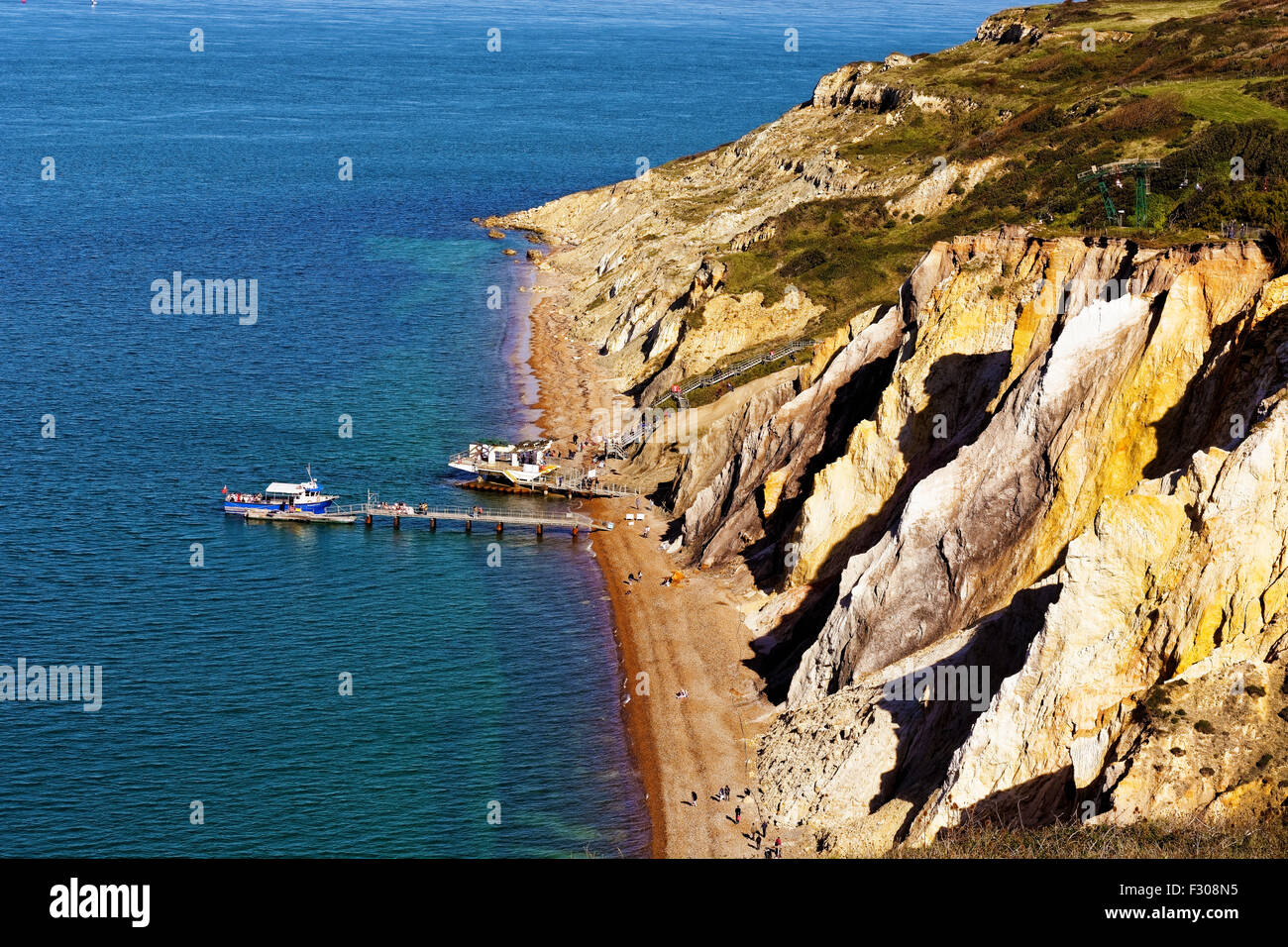The most famous landmark of the Isle of Wight – three chalk stacks rising out of the sea next to Alum Bay landmark attraction

Image details
Contributor:
Philip Chapman / Alamy Stock PhotoImage ID:
F308N5File size:
68.7 MB (9.1 MB Compressed download)Releases:
Model - no | Property - noDo I need a release?Dimensions:
6000 x 4000 px | 50.8 x 33.9 cm | 20 x 13.3 inches | 300dpiDate taken:
26 September 2015Location:
Needles, Alum Bay, Isle of Wight, England, UKMore information:
Today, the famous Isle of Wight Needles is a row of three distinctive stacks of chalk rising out of the sea at the island’s western extremity. They are close to the landmark attraction and pleasure park of Alum Bay, that can be reached by chairlift. The Needles Lighthouse was built in 1859, automated since 1994. The formation takes its name from a fourth needle-shaped pillar called Lot's Wife that collapsed in a storm in 1764. The remaining rocks are not at all needle-like, but the name has stuck. They were featured on the 2005 TV programme ‘Seven Natural Wonders’ as one of the wonders of Southern England. Scenic boat trips operate from Alum Bay offering close-up views of the Needles. The rocks and lighthouse have become icons of the Isle of Wight, and are featured on many of the souvenirs sold throughout the island. The main tourist attractions of the headland are the two gun batteries, the experimental rocket testing station and coastguard cottages.The Needles were a site of a long-standing artillery battery, from the 1860s to 1954, and the nearby site on High Down tested rockets for the British ICBM programme and tests for Black Knight and Black Arrow rocket engines from 1956–71 and later used to launch the Prospero X-3 satellite. The Needles' pointed shape have unusual geology - strata have been so heavily folded during the Alpine Orogeny that the chalk is near vertical. This chalk outcrop runs Culver Cliff in the east to the Needles in the west, continuing under the sea to the Isle of Purbeck, forming Ballard Cliff (near Swanage), Lulworth Cove and Durdle Door. It is also believed that The Needles were once connected to Old Harry Rocks (east of Studland and north of Swanage) where these strata lines moving from horizontal to near vertical can be seen from the sea. Just off the end of the Needles formation is the Shingles, a shifting shoal of pebbles just beneath the waves. The Shingles is approximately three miles in length where many ships have been wrecked